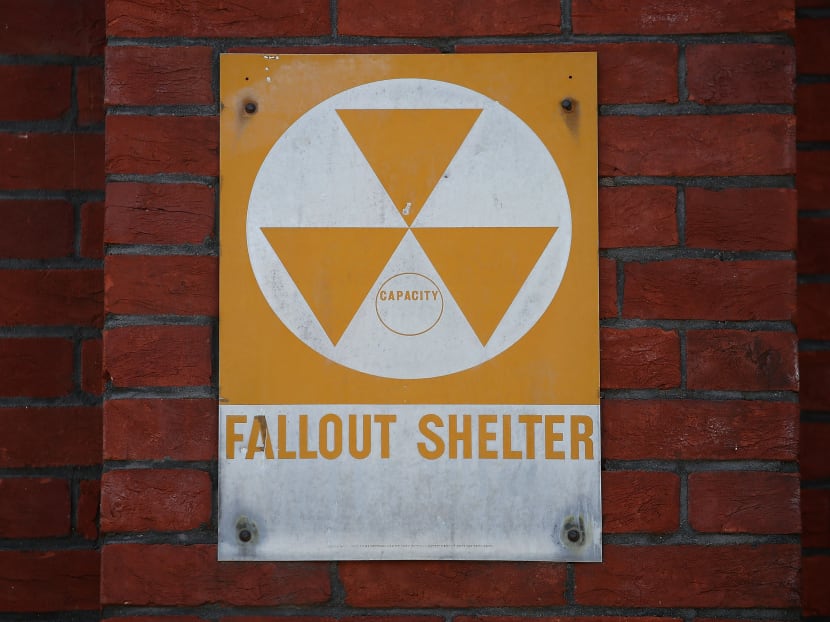A giant nuclear blast, but a hydrogen bomb? Too soon to say
NEW YORK — Not all nuclear arms are created equal. They have four main designs that progressively raise the destructive power of the weapons and their ability to obliterate large targets. The biggest are known as city busters.

A nuclear fallout shelter sign. Photo: AFP
NEW YORK — Not all nuclear arms are created equal. They have four main designs that progressively raise the destructive power of the weapons and their ability to obliterate large targets. The biggest are known as city busters.
Despite that range of fiery outcomes, and the unthinkable consequences, nuclear experts say that unusually large test explosions can be achieved in a variety of ways, making the field of atomic forensics quite difficult for distant experts.
With Sunday’s (Sept 3) large North Korean blast, NORSAR, short for the Norwegian Seismic Array, a research group based in Kjeller, noted that global shock waves alone provide insufficient information to determine if the detonation was a true hydrogen bomb, as the North declared.
“But we can say in general,” the group added, “that the credibility of the claim increases with increasing explosive yield.” It said other evidence, such as leaks of radioactivity from the underground test site, might solve the riddle of the bomb type in the weeks to come.
Nuclear experts said the blast Sunday was somewhere between four and 16 times as powerful as North Korea’s previous largest explosion, which was about the size of the Hiroshima bomb.
The most basic kind of nuclear weapon — the kind experts say the North began with — is known as an atomic bomb. It gets its energy from splitting heavy atoms in chain reactions. The main fuels of atomic bombs are uranium or plutonium, both heavier than lead and both far more expensive than gold.
A cheaper and more powerful way of freeing the atom’s hidden energies is to fuse two light atoms into one. The main fuels are deuterium and tritium, both rare but inexpensive forms of hydrogen. They are known as thermonuclear fuels because their ignition requires the blistering heat of an exploding atomic bomb, which acts like a match.
The United States in 1951 injected a tiny amount of thermonuclear fuel into the core of an atomic bomb, enhancing its power. The explosion was roughly three times as strong as the Hiroshima blast.
Some experts say the North is now taking this second step in bomb design. Others say the isolated state may have raced ahead to the third stage. That method wraps alternating layers of thermonuclear fuel and uranium around atomic bombs, and burns more hydrogen than simple boosting.
David Albright, a former UN weapons inspector and president of the Institute for Science and International Security, a private group in Washington that tracks nuclear arms, noted in a recent report that Russians who first tried that approach produced a blast more than 25 times as strong as the Hiroshima bomb.
A true hydrogen bomb, the fourth stage of development, works by positioning near the triggering atomic bomb a separate capsule that can hold a much larger amount of thermonuclear fuel.
In 1954, on Bikini Atoll in the Pacific, the United States tried that approach. The fireball expanded for miles. The shock wave swept neighboring atolls clean of vegetation and animals. In minutes, the mushroom cloud rose some 25 miles. Slowly, its radioactivity spread around the globe.
The destructive force of that single hydrogen device turned out to be far greater than all explosives used in World War II, including the atomic bombs dropped on Hiroshima and Nagasaki. The blast, code-named Bravo, was 1,000 times as powerful as the Hiroshima bomb. It was the nation’s most violent thermonuclear test ever.
Experts say North Korea is unlikely to achieve that kind of destructive power anytime soon, if ever. But they say the accumulating evidence suggests that the reclusive state is trying to do so — and trying hard. THE NEW YORK TIMES





